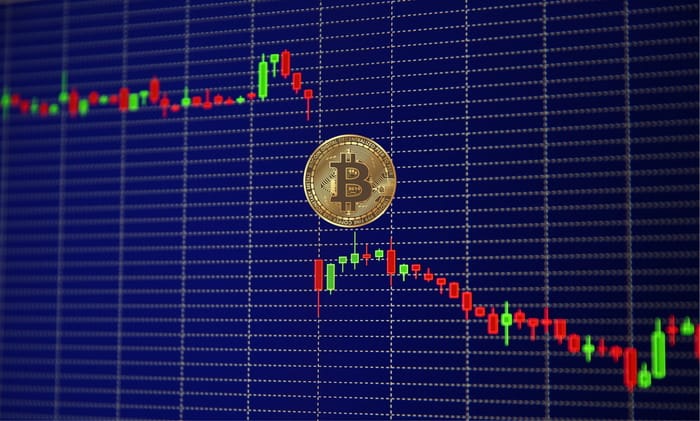By examining historical data and employing statistical measures, we aim to uncover the factors driving WBTC’s price fluctuations and explore its relationship with other cryptocurrencies, particularly Bitcoin. If you’re considering trading cryptocurrencies, it’s essential to find a reputable exchange like Graminator to ensure the security of your digital assets.
Analyzing Price Volatility of Wrapped Bitcoin
In this section, we will delve into the analysis of the price volatility of Wrapped Bitcoin (WBTC). By examining historical data and employing statistical measures, we aim to gain insights into the factors contributing to WBTC’s price volatility and its relationship with other cryptocurrencies, particularly Bitcoin.
To conduct our analysis, we collected relevant data and adopted a comprehensive methodology. Our approach involved calculating various volatility measures to quantify the degree of price fluctuations experienced by WBTC over a specific period. This enabled us to compare WBTC’s volatility with that of other cryptocurrencies and identify any distinctive patterns or trends.
The price volatility of WBTC is influenced by several factors. Market demand and supply dynamics play a crucial role in shaping price movements. Fluctuations in investor sentiment, trading volumes, and liquidity can significantly impact WBTC’s price stability. We examine these factors and their interplay to better understand the volatility patterns observed in WBTC.
Furthermore, regulatory changes within the cryptocurrency space can have a notable impact on WBTC’s price volatility. Government regulations, legal frameworks, and policy decisions can introduce uncertainties that directly affect market dynamics and investor sentiment. We explore the relationship between regulatory developments and the price volatility of WBTC, shedding light on the potential implications for investors and the overall ecosystem.
It is also essential to analyze the relationship between WBTC and Bitcoin’s price volatility. As WBTC represents a tokenized version of Bitcoin, changes in Bitcoin’s price often have a ripple effect on WBTC’s price movements. By examining this relationship, we can gain insights into how WBTC’s volatility may be influenced by fluctuations in Bitcoin’s market.
By conducting a thorough analysis of WBTC’s price volatility, we aim to provide a comprehensive understanding of the underlying dynamics and factors at play. This knowledge can help stakeholders, including investors, traders, and ecosystem participants, make informed decisions and develop effective risk management strategies in the volatile cryptocurrency market.
Implications and Future Outlook
Analyzing the price volatility of Wrapped Bitcoin (WBTC) has several implications for investors, market participants, and the broader cryptocurrency ecosystem. Understanding these implications is crucial for making informed decisions and mitigating risks associated with WBTC’s price fluctuations.
The high price volatility of WBTC poses both opportunities and challenges for investors. On one hand, price volatility can create potential profit opportunities for traders who can accurately anticipate and exploit price movements. However, it also increases the risk of significant losses, particularly for those who are not well-prepared or lack risk management strategies. Investors need to carefully assess their risk tolerance and devise appropriate risk mitigation approaches when dealing with a volatile asset like WBTC.
Moreover, the price volatility of WBTC may affect its adoption and usage as a medium of exchange or store of value. Merchants and businesses may be hesitant to accept a cryptocurrency that exhibits significant price swings, as it introduces uncertainties in terms of profitability and stability of their revenue. Therefore, managing price volatility becomes essential for the broader adoption and integration of WBTC into real-world applications and financial systems.
Looking ahead, the future outlook for WBTC and its price volatility is subject to various factors. Market developments, technological advancements, and regulatory changes will play significant roles in shaping WBTC’s trajectory. As the cryptocurrency ecosystem continues to evolve, it is expected that regulatory frameworks will become more established, potentially bringing more stability to WBTC’s price dynamics.
Additionally, advancements in decentralized finance (DeFi) and the broader adoption of WBTC in various applications could also impact its price volatility. As the utility and demand for WBTC grow, it could lead to increased liquidity and stability in its market, potentially dampening volatility to some extent.
Furthermore, ongoing efforts to improve WBTC’s underlying infrastructure, such as enhanced security measures and more efficient trading platforms, may contribute to reducing price volatility and attracting a broader range of investors.
Conclusion
While WBTC’s volatility presents opportunities for profit, it also carries risks that require careful consideration. The future outlook for WBTC’s price volatility depends on various factors, including regulatory developments and advancements within the cryptocurrency ecosystem. By understanding and managing volatility, stakeholders can make informed decisions and contribute to the broader adoption and stability of WBTC in the evolving crypto market.

